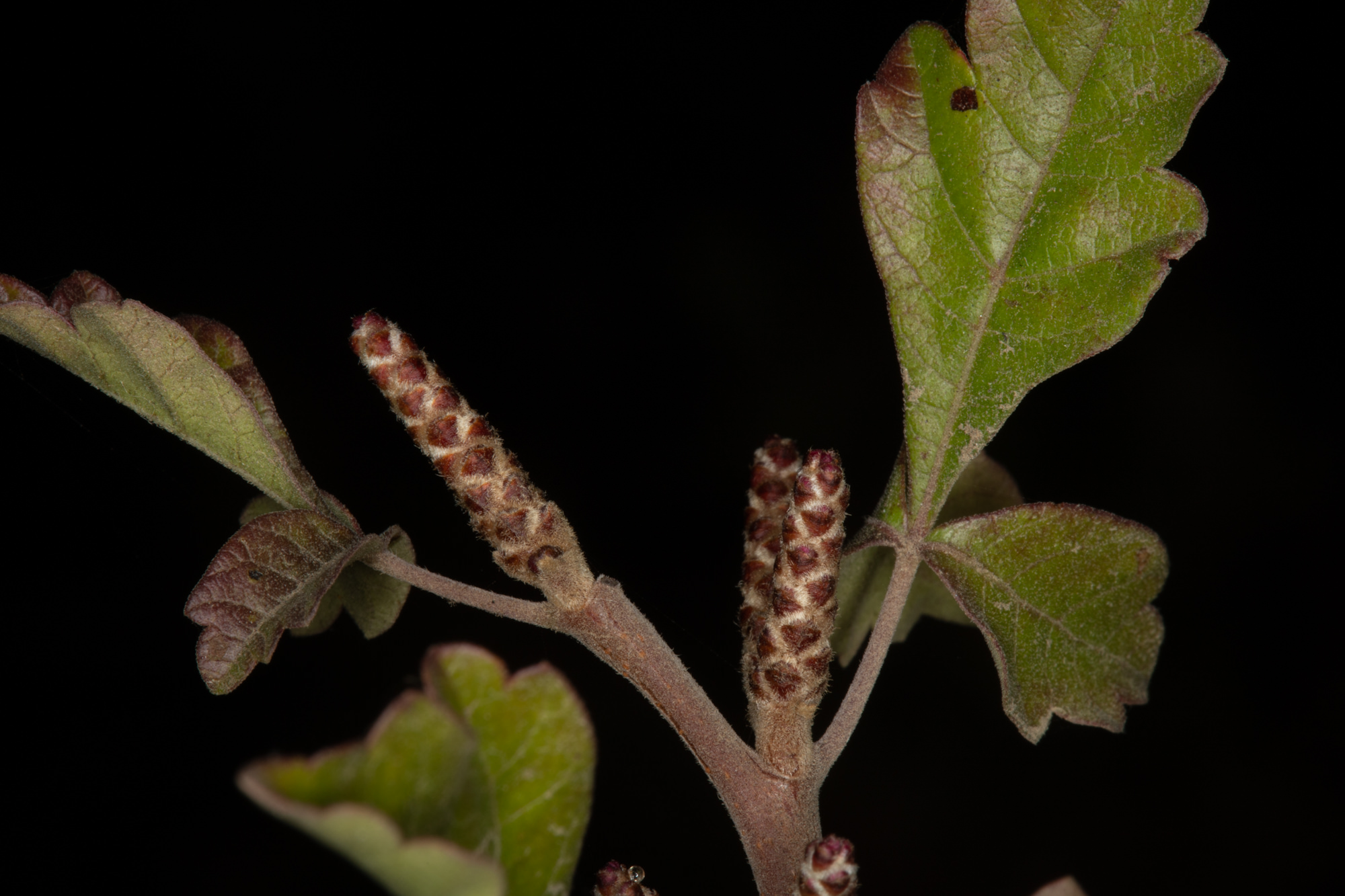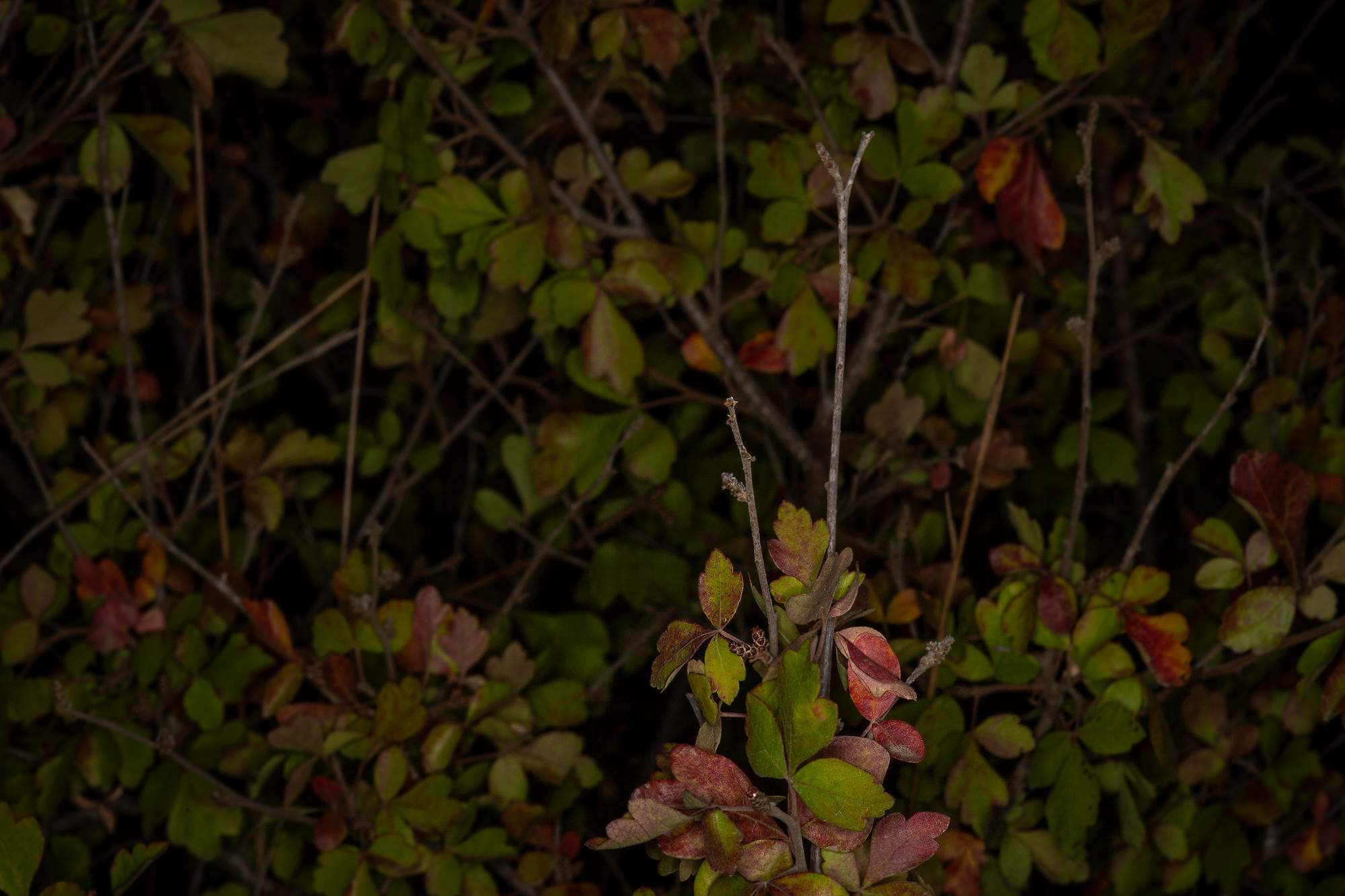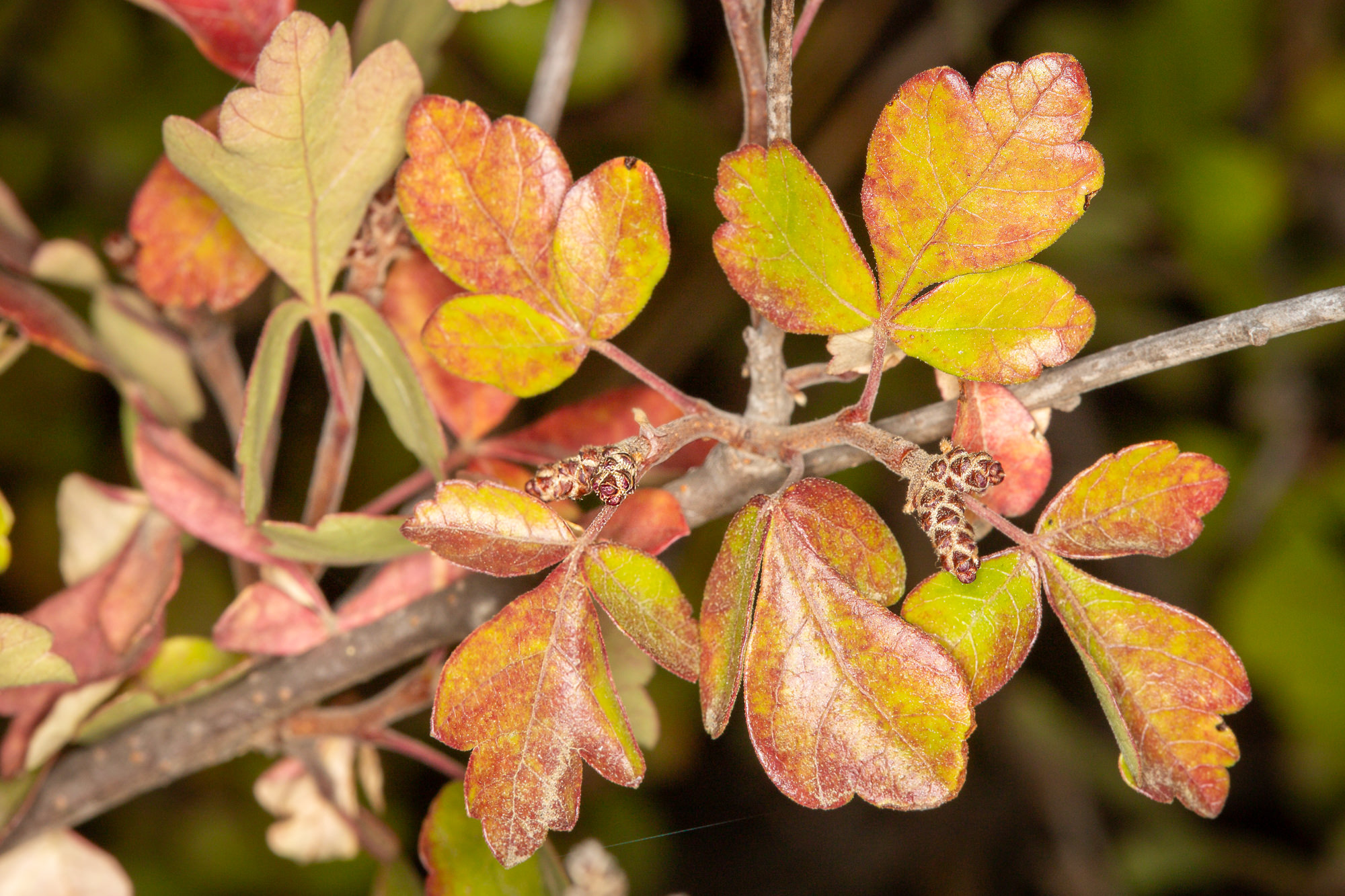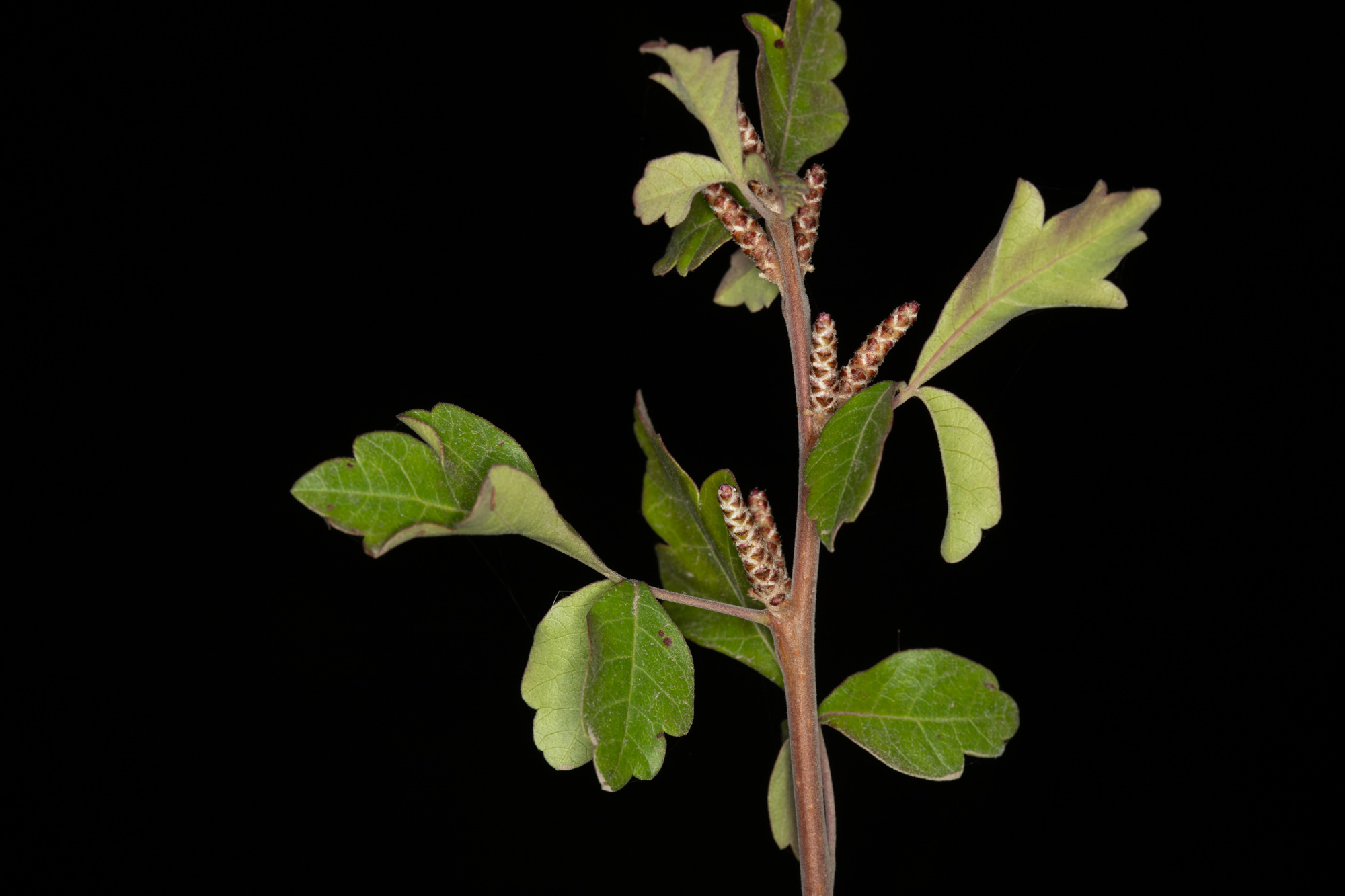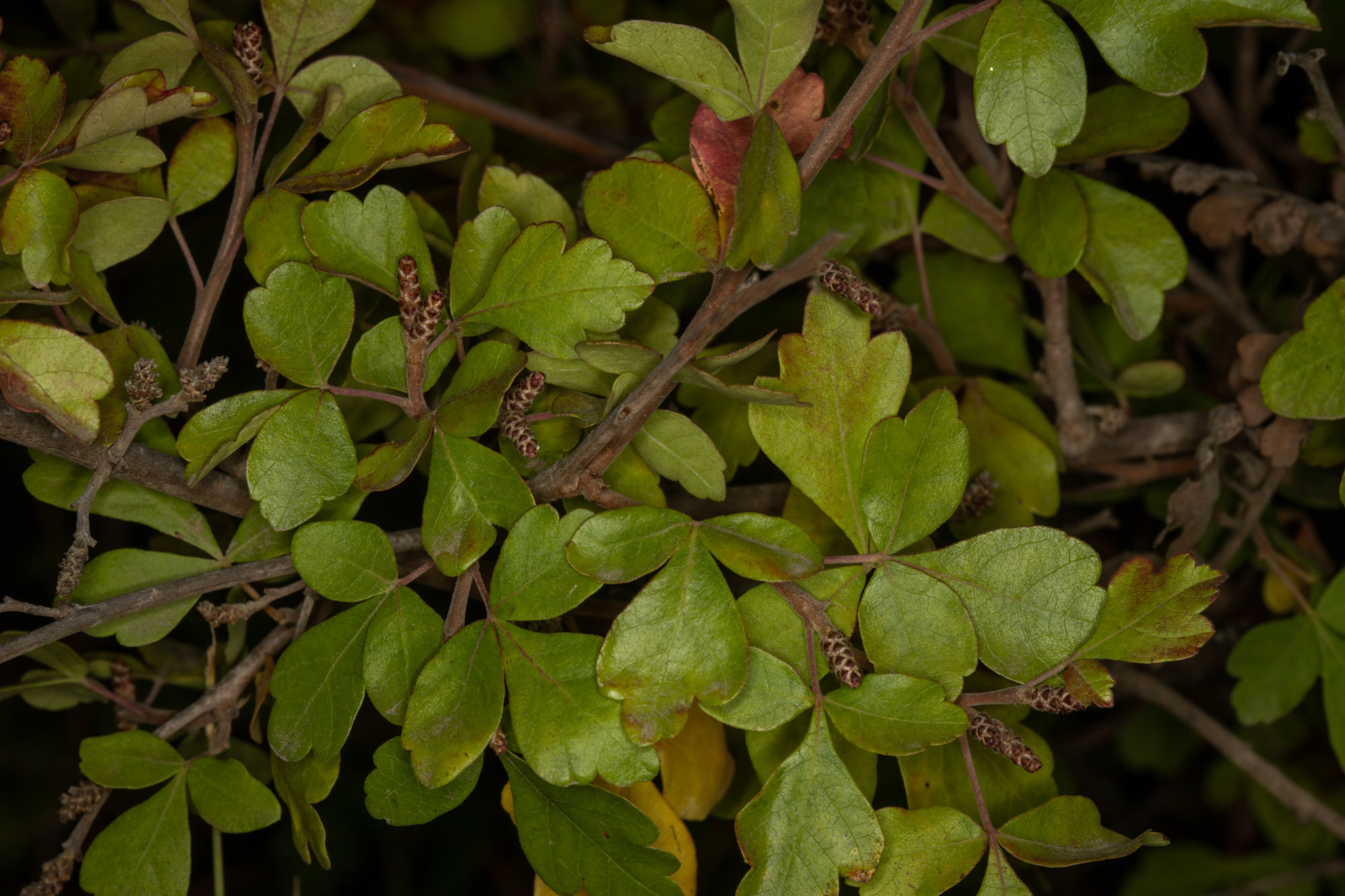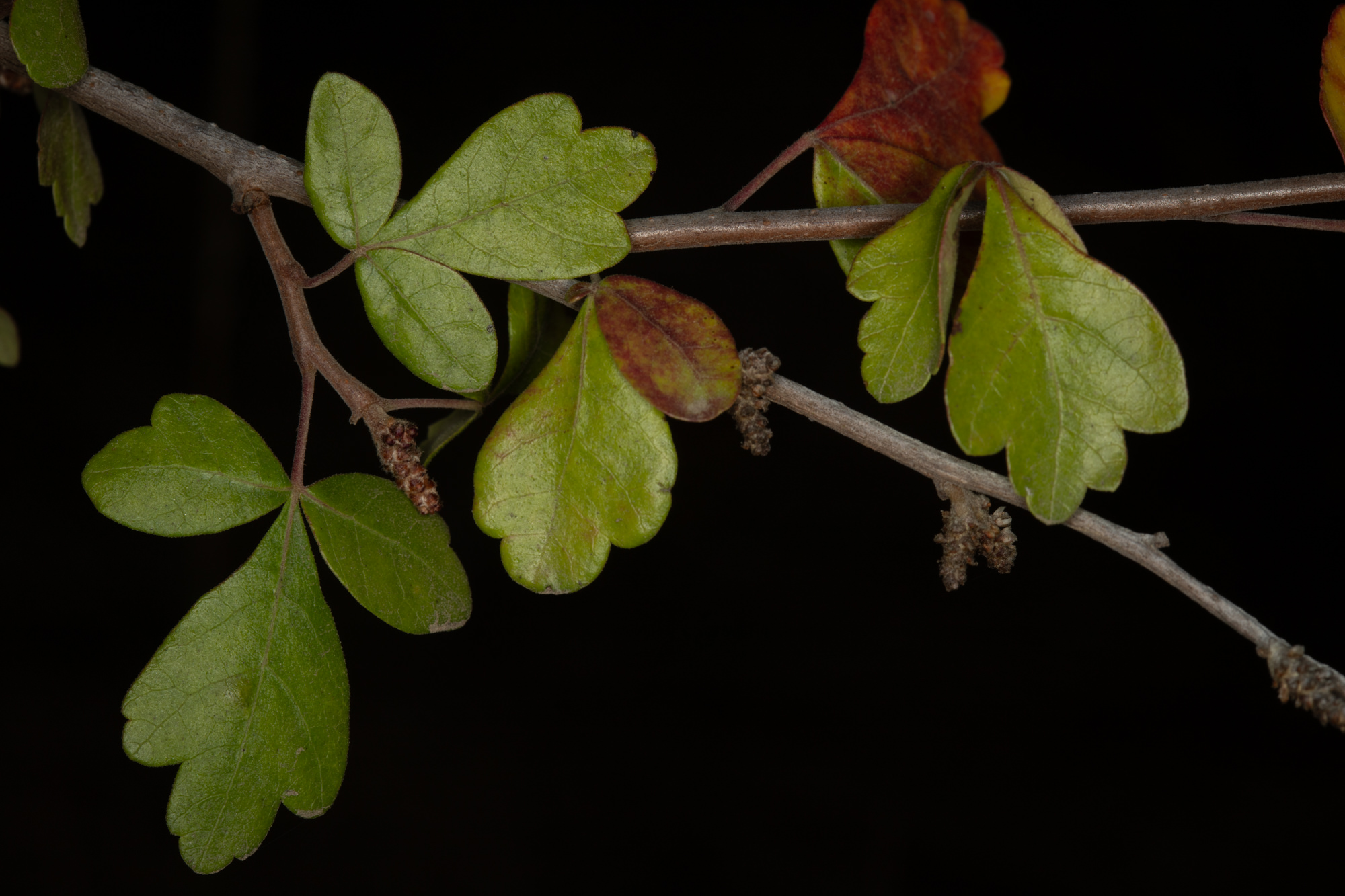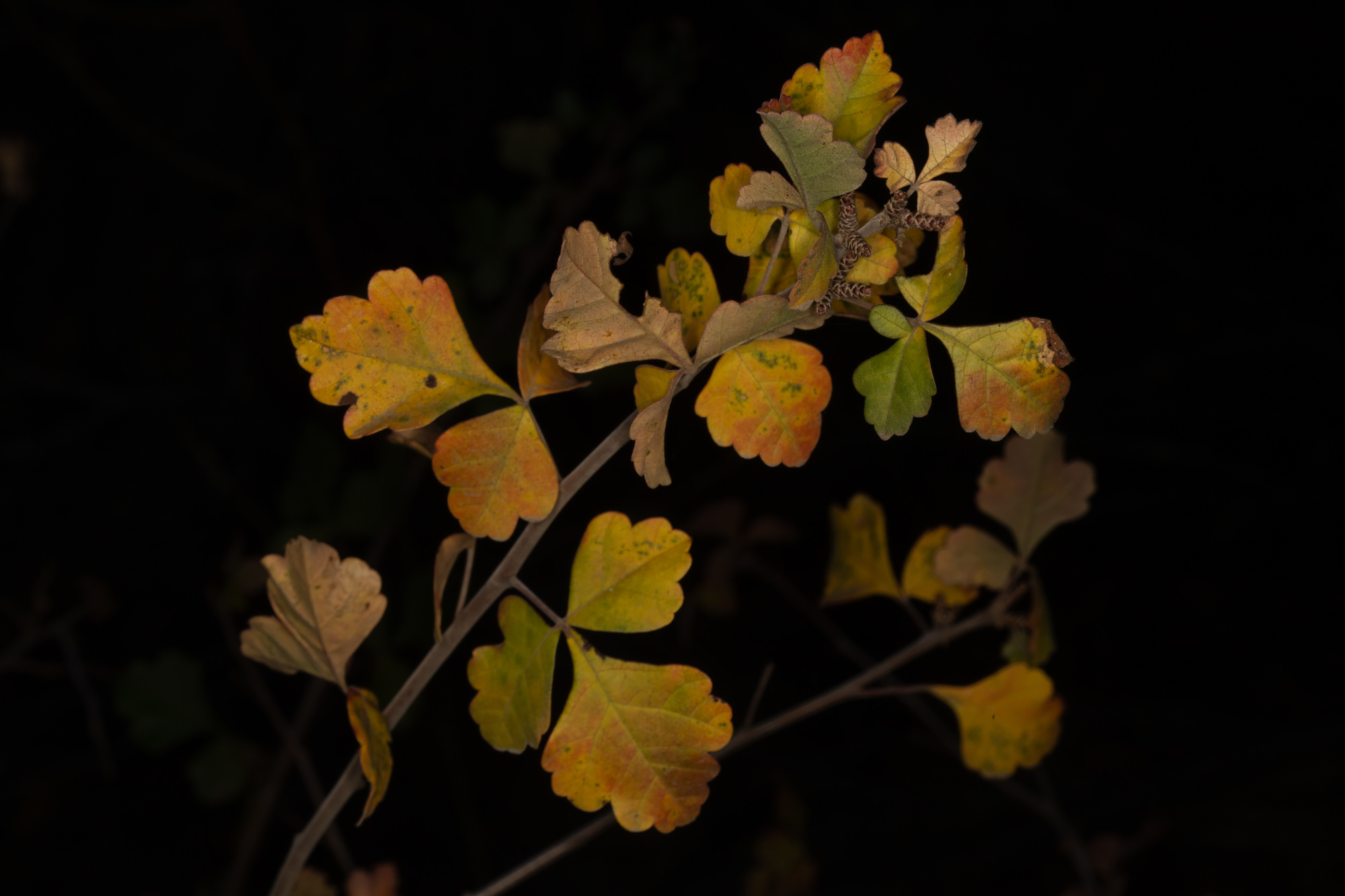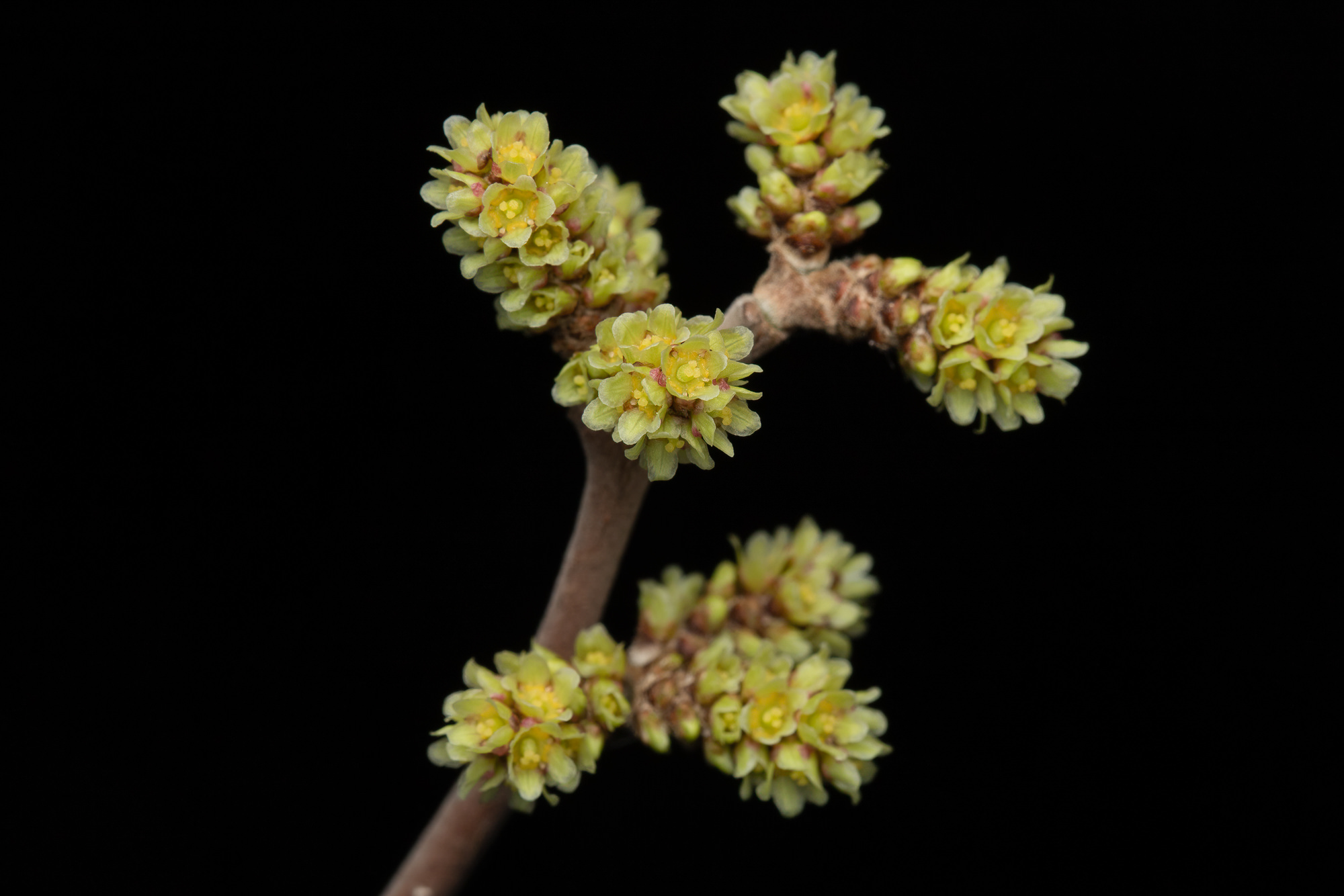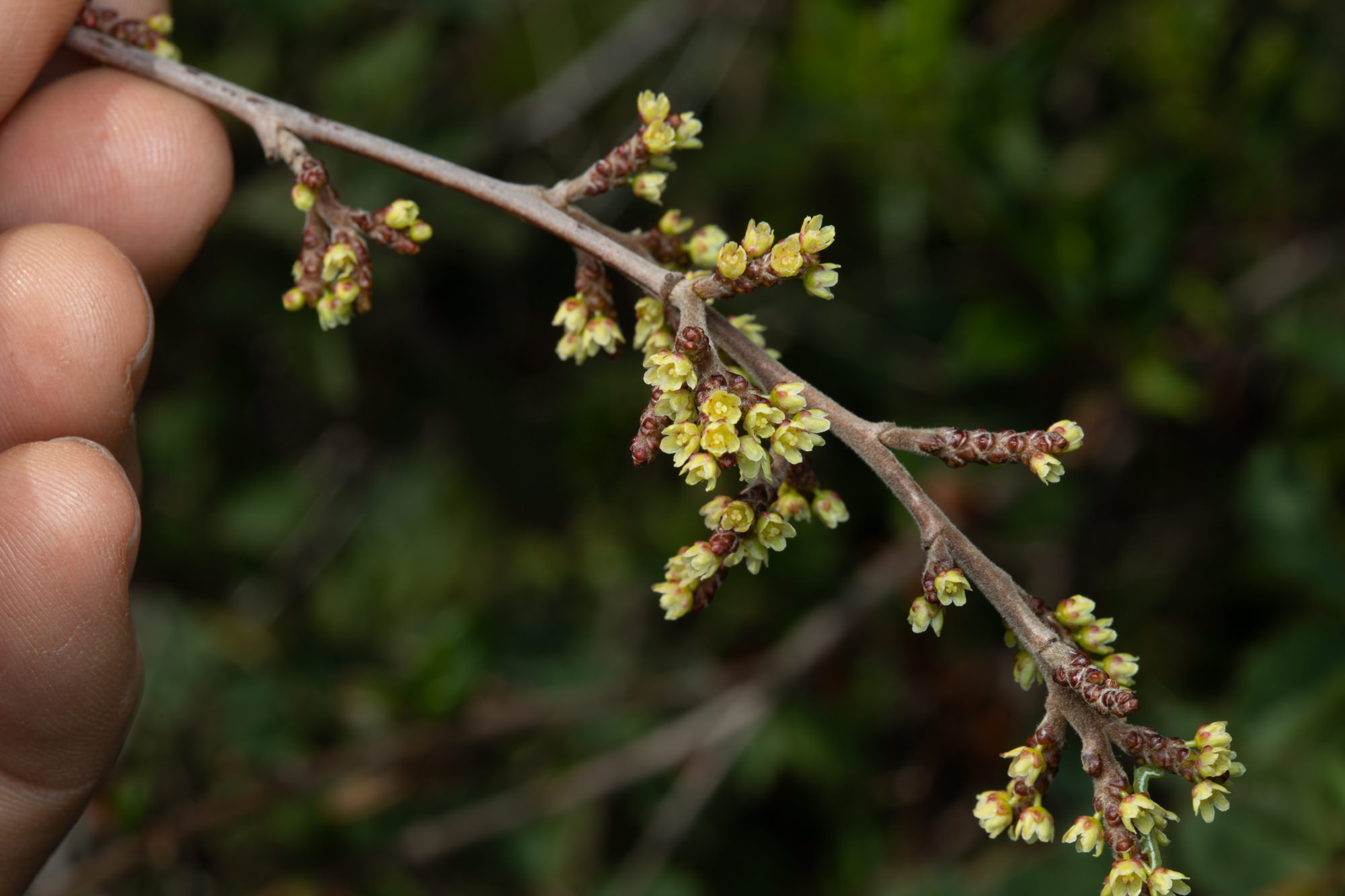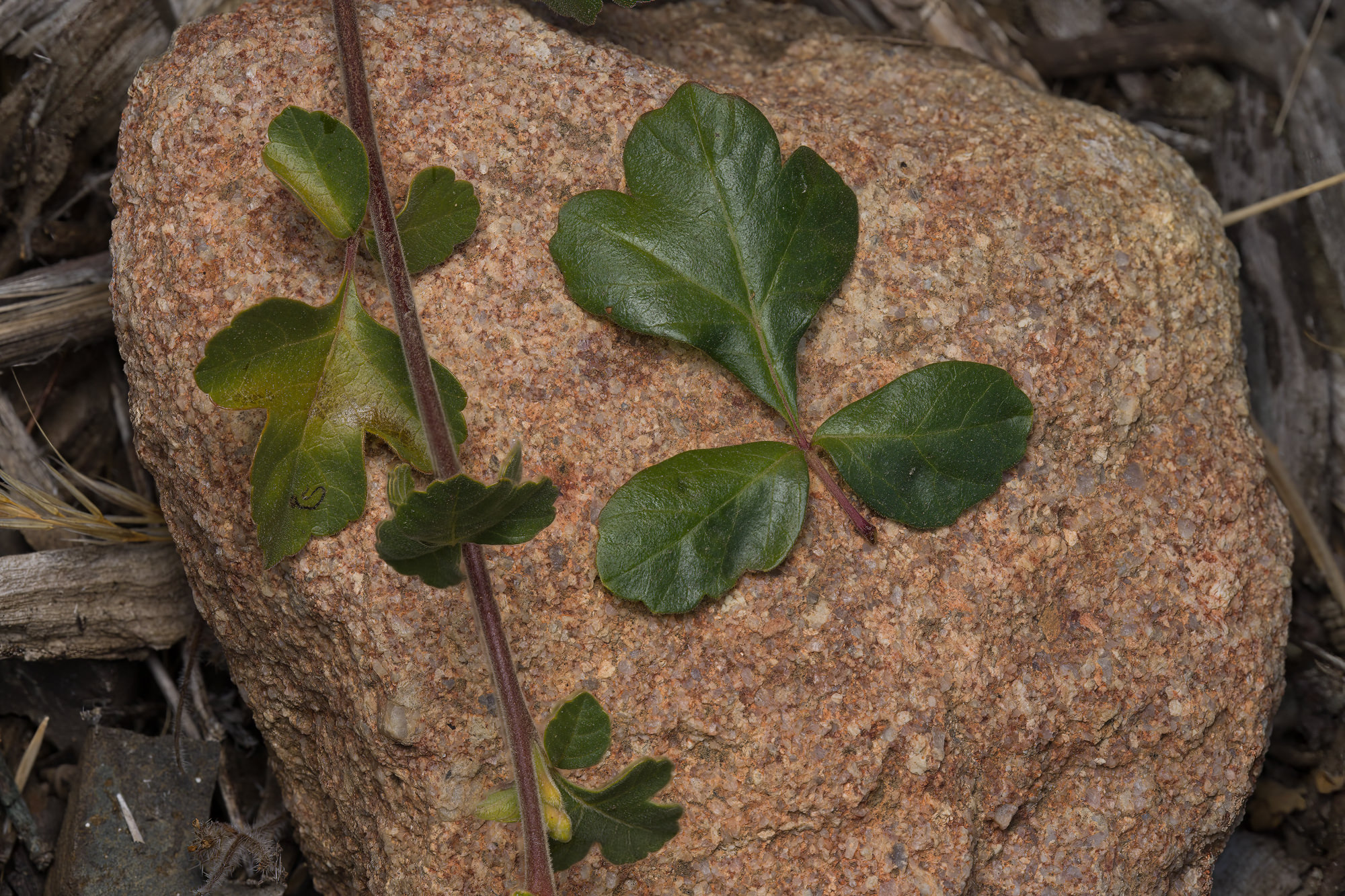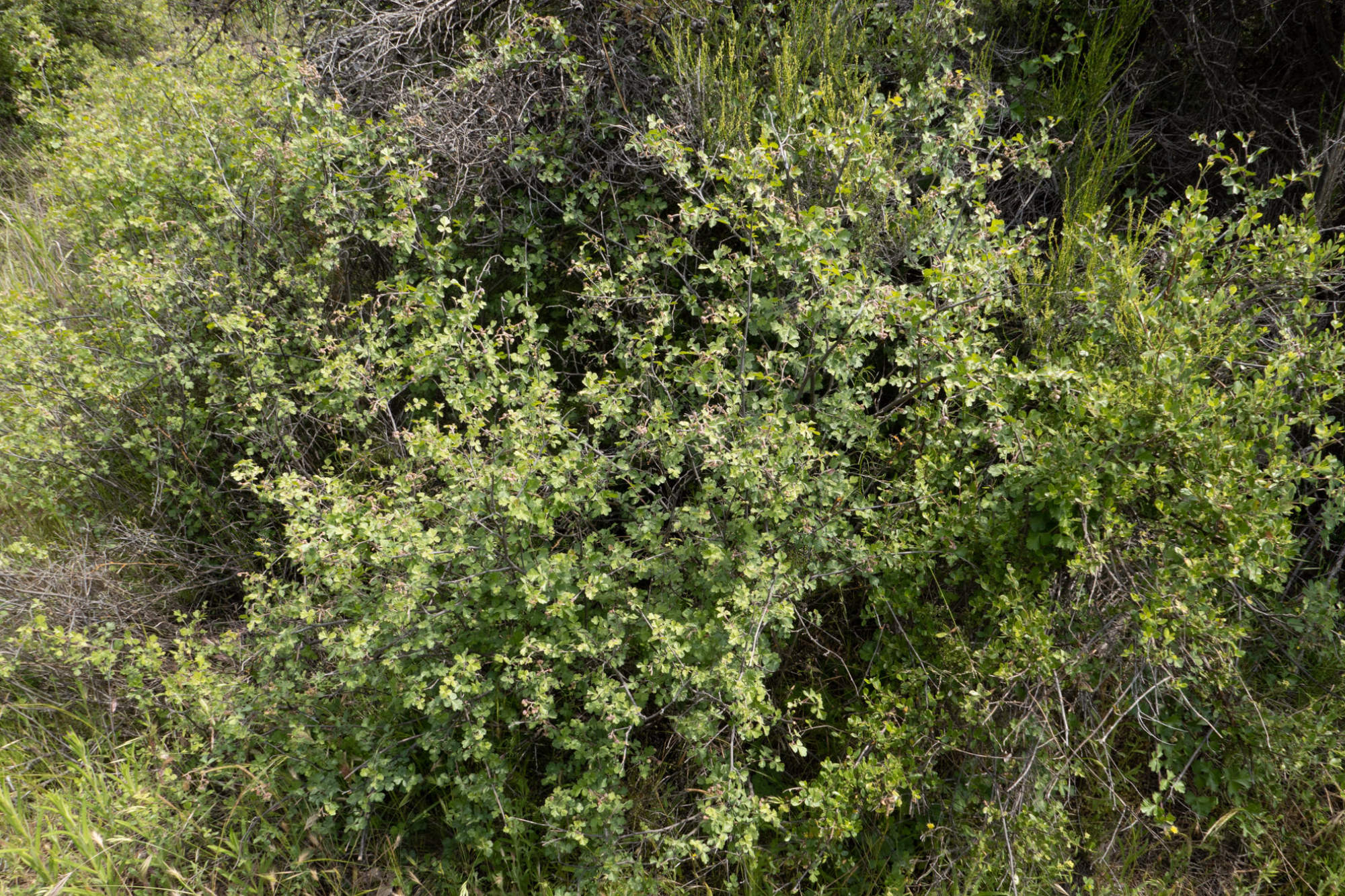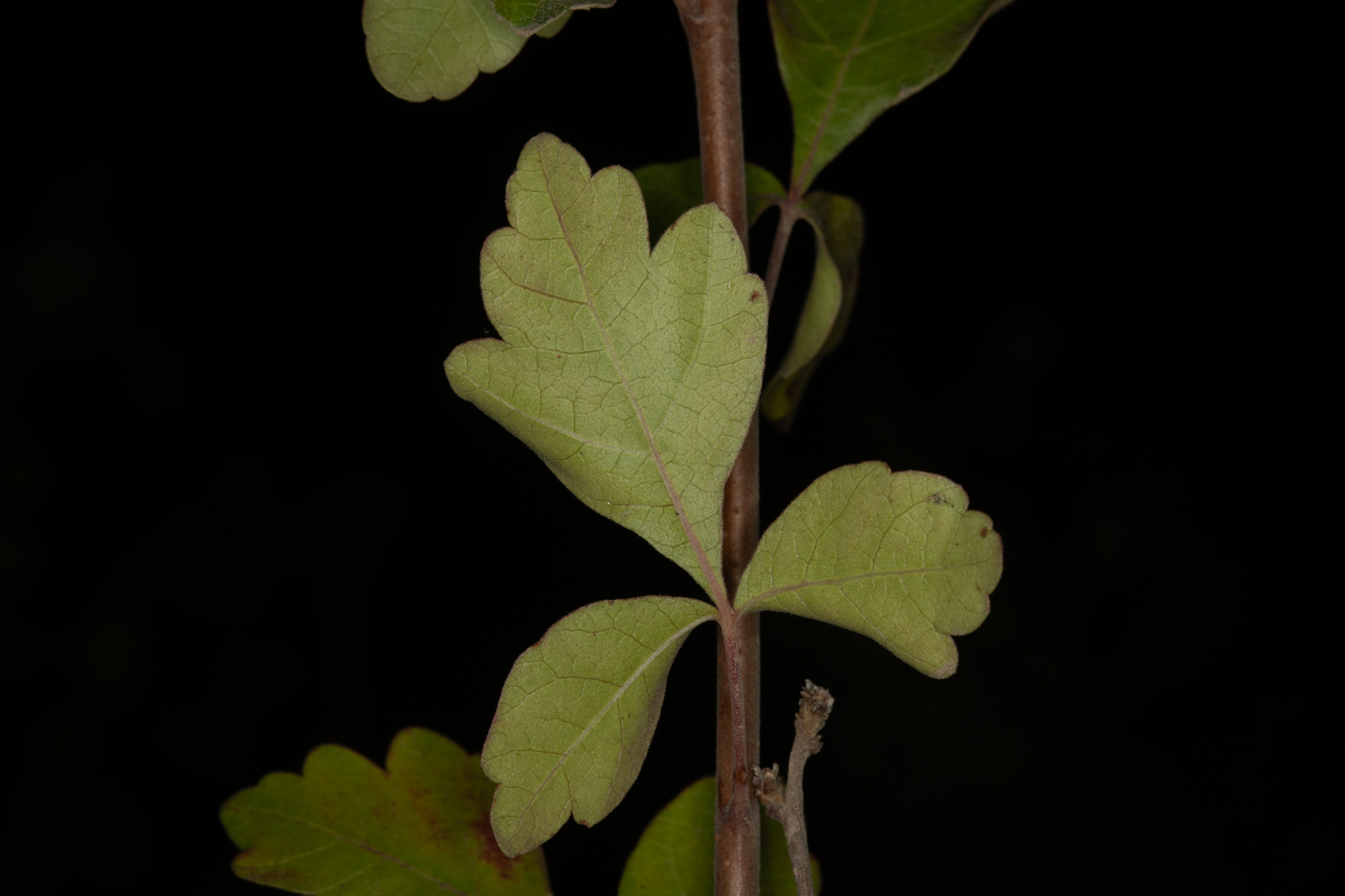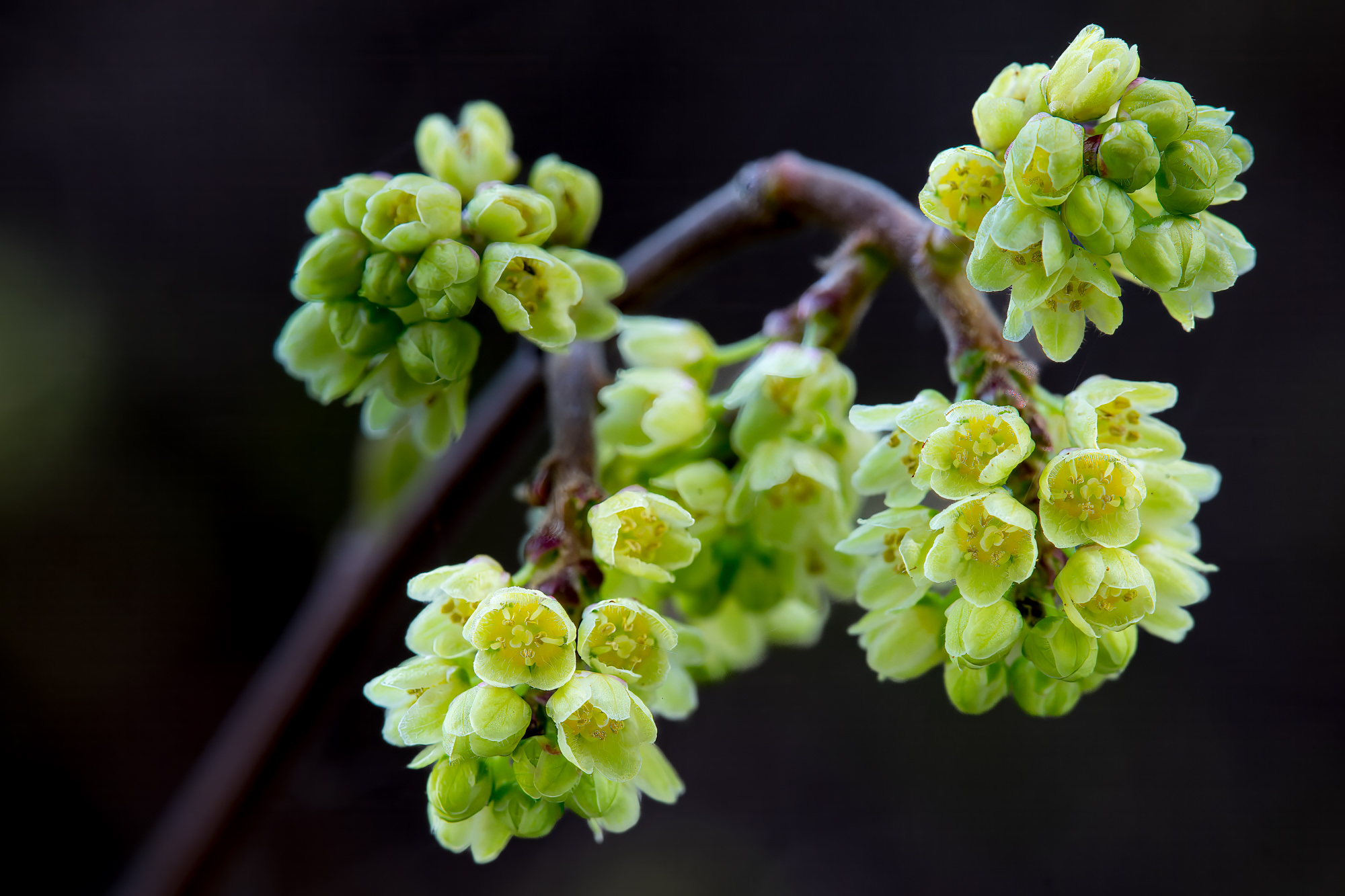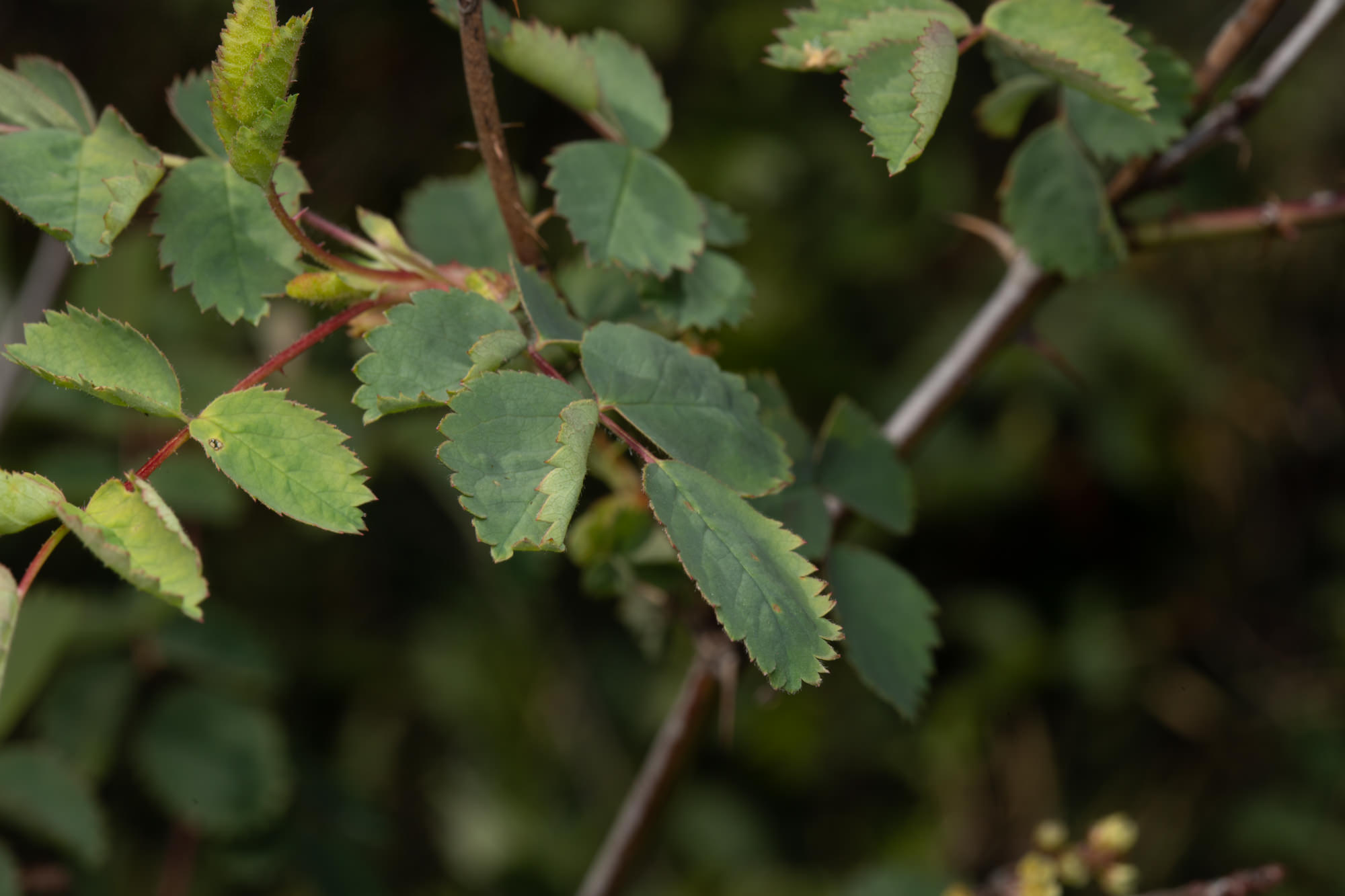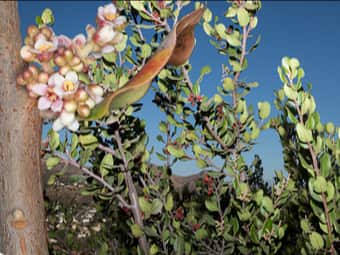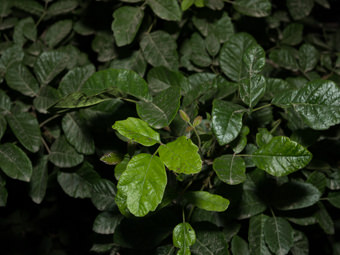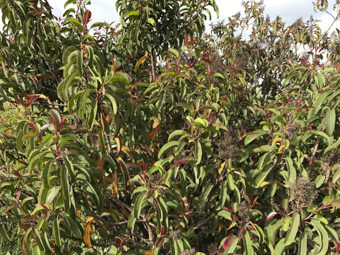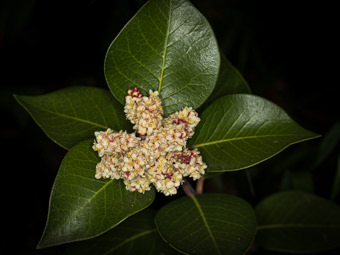Basket Brush
- Rhus aromatica
| Common Name(s): | Basket Brush |
| Scientific Name: | Rhus aromatica |
| Family: | Anacardiaceae (Sumac) |
| Plant Type: | Shrub |
| Size: | 1 meter to 2 meters |
| Habitat: | chaparral, grassland |
| Blooms: | February to April |
| Fire Response: | Germinate from Seed |
Basket Brush - Rhus aromatica -is a shrub with wide spread distribution from Canada and throughout most of the lower 48 states, Another common name is skunk brush - I did not find the odor unpleasant. Many people think the odor is akin to wintergreen. This shrub grows on dry, rocky hillsides and hills composed of sand, as well as along streams, canyon bottoms, and wetlands. There are regional differences (height, form and so on) in the plant that have helped it adapt to a wide variety of environments.
If at first glance you think “leaves of three” and poison oak, then look closer. Red berries are one clue but so is the lack of a distinct stem on the terminal leaflet. I have included an image of just the leaves. They do belong to the same family - be sure what you at looking at before crushing the leaves!
This deciduous, flowering native shrub can grow to about 2 meters tall under ideal conditions (water & sun light). Roots can reach 20 feet and be long lived (30 years). Woody rhizomes often link what appear to be separate plants
This plant is considered dioecious - having male and female flowers on separate plants. The plant flowers in March.
Fire Response: the plant is top killed by fire and then vigorously sprouts from the stump. Heat activates germination response in the seed.
Uses by Native peoples: the young shoots provided material for baskets. The berries were used as food and to make a refreshing beverage. Leaves were eaten to provide relief from stomachaches and crushed to make poultices. Native peoples also suffered from the occasional poison oak rash - basket brush leaves were used to provide some relief. Additionally, parts of the plant were used to make dye for baskets and wool. Lastly, there are some reports that people dried the leaves and mixed them with tobacco to smoke.
Link to Calflora.net - the best source of this fascinating information.
Name Origin:
Rhus: derived from rhous, an ancient Greek name for sumac. The genus Rhus was published by Carl Linnaeus in 1753.
aromat'ica/aromat'icus: fragrant.
Contributed by George Sherman
Featured Plants in the Anacardiaceae (Sumac) Family:
Last modified: August 21 2024 15:18:57.
Number of Images: 15
Image Size Total: 7,846,417
References:
Wildflowers of the Santa Monica Mountains, by Milt McAuleyFlowering Plants: The Santa Monica Mountains, Coastal and Chaparral Regions of Southern California, by Nancy Dale
Chumash Ethnobotany: Plant Knowledge Among the Chumash People, by Jan Timbrook
Leaf Shapes Primer - Botanical Terms for Leaves: - Link

